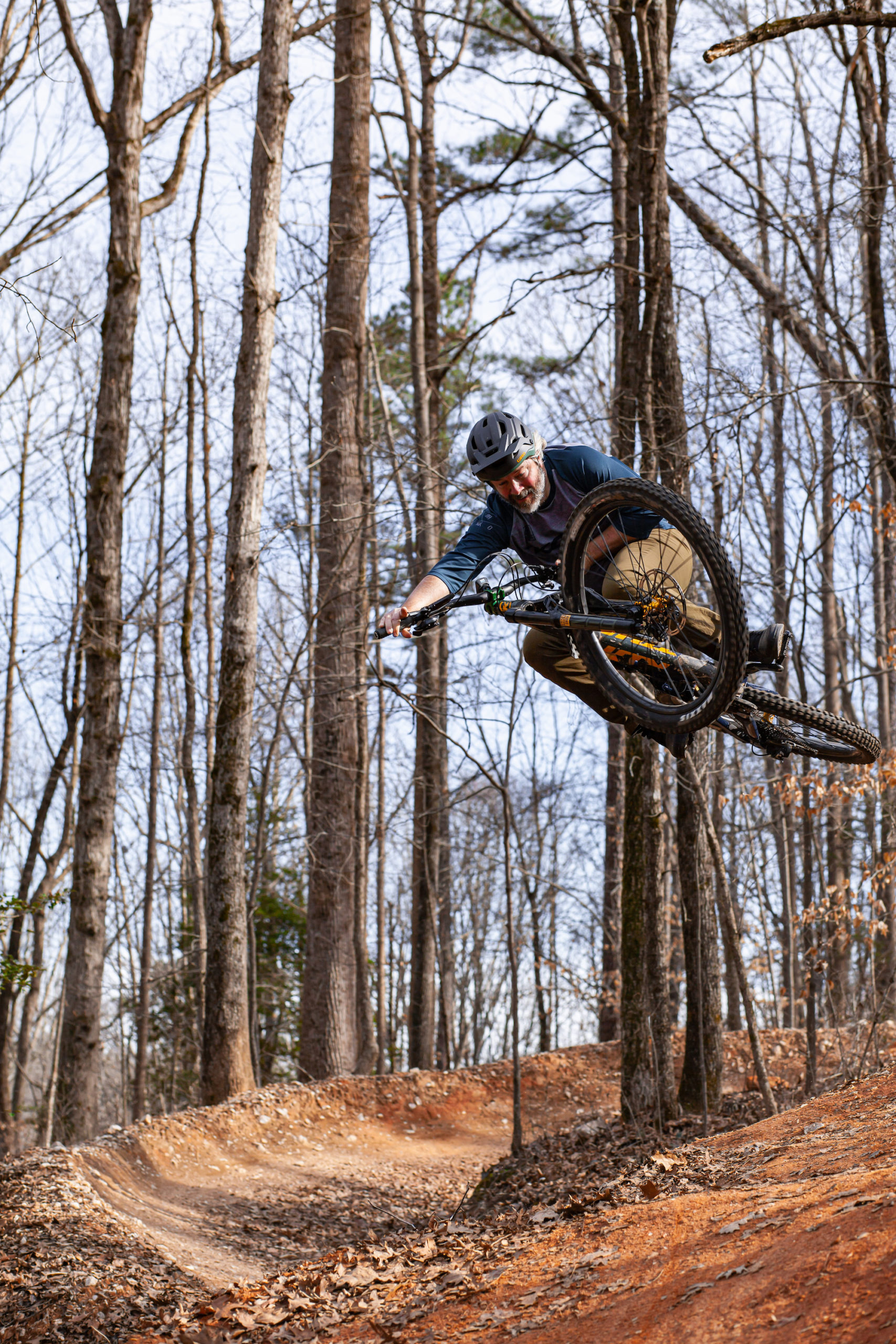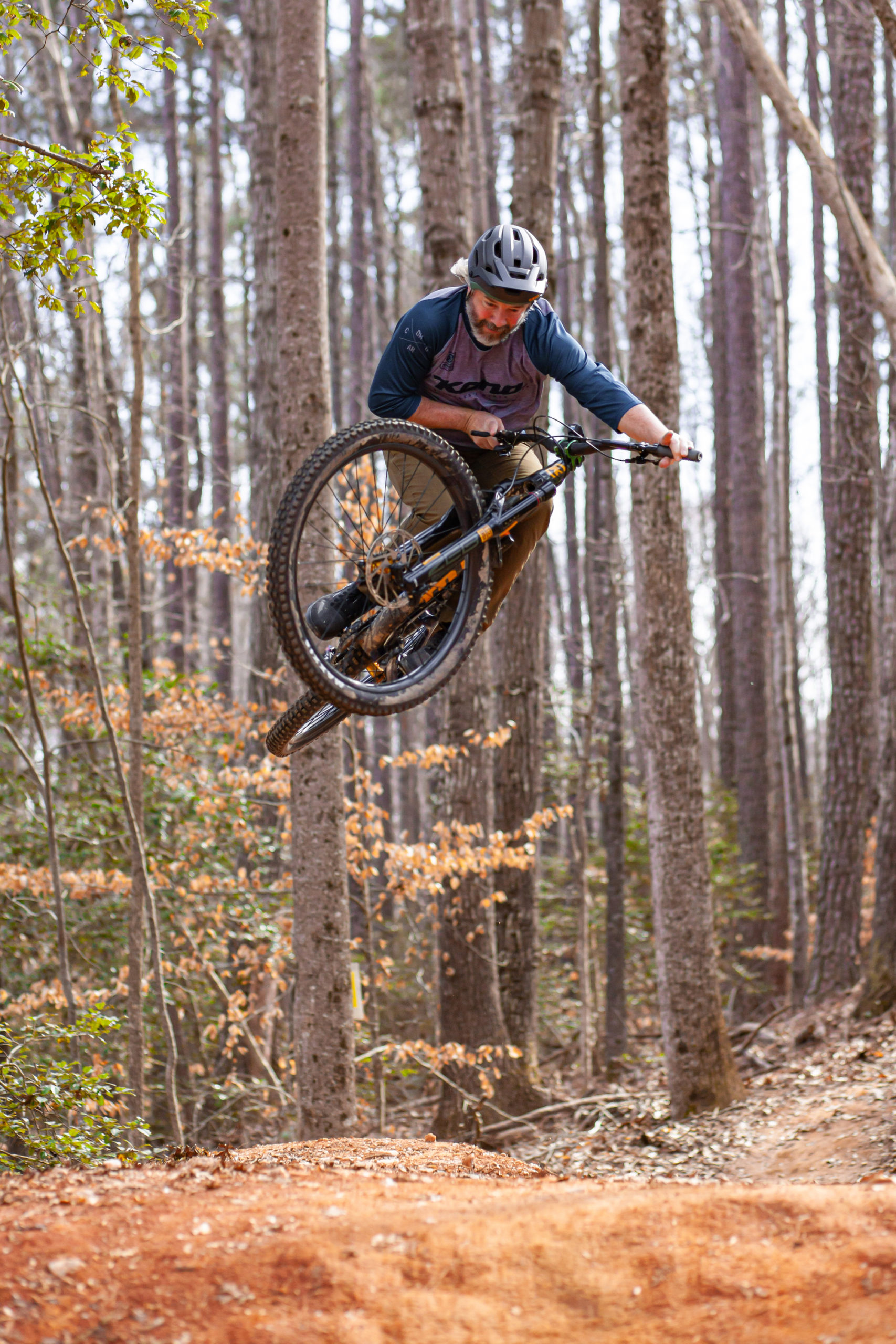By Ambassador Mark Overby. Photos by Jared Harber
2021 is shaping up to be a year that will be full of new beginnings. With so many changes on the horizon, I’m going to take this opportunity to focus on one – a new bike! Figuring out a new bike is fun, challenging, and rewarding. I’m pretty quick to hop on any bike and ride it reasonably ok, but getting it dialed takes a bit of time and effort.
The bike in question is the new Process X. With 2 chainstay length options and the ability to run it as a mullet, there’s quite a bit to figure out on it. My local terrain isn’t fast and rowdy enough to warrant running the long chainstay setting, but I’m sure I’ll give it a go when I hit some downhill tracks this summer. I am definitely excited to try it as a mullet. After I spend a bit of time on it in full 29 mode I’m going to swap the rear wheel from my hardtail and see how that feels. Hopefully I can report back towards the end of this story.
For some context, the Process X is replacing my Process 153 CR as my “big bike”. My 153 was set up with a 170mm fork and a coil shock with a progressive spring. After the G2 153 being around for a few years, and the G2 134 pretty closely mimicking the 153 geometry, I figured a more aggressive Process was on the way. The Process X wasn’t entirely what I was expecting, (a 27.5” 153CR with updated geo) but it’s a super progressive bike with a large degree of adjustability.

My Process X started out as the DL version complete bike and I swapped the wheels along with a few components. The stock suspension components stayed put and I don’t see any need to change them out. I’m running the chainstay in the short setting since I like a playful bike and as mentioned earlier, my local terrain doesn’t really require the stability that the long setting would offer. I live in central North Carolina and we have rolling terrain with punchy climbs and short downs, but bigger terrain is pretty accessible and I look forward to spending some time in the mountains this summer getting the X up to speed.
So I begin the journey in the full 29 mode and short chainstay setting. Setting up the suspension is straightforward, as I’m a pretty average size with pretty average requirements. The fork and shock come stock with one token (or volume reducer) in each and I haven’t found the need to alter either. I used the Rockshox Trailhead app for the fork and ended up pretty close to the suggested settings – a few psi lower than recommended to use all the travel, I guess I ride light. For the shock I went with just under 95% of body weight to get sag right and I seem to be using all of the travel appropriately. I will continue to tweak my suspension settings a little, but it feels pretty good as it is now.

If you’re wondering how it rides in pretty much the stock configuration (with the short chainstay setting), in a word – unflappable. I imagine it is only more stable with the long chainstay setting, but it retains its playfulness and the ability to manual (as much as I’m capable of) with the short setting. Given the numbers (reach, head angle, wheelbase) it’s surprisingly manageable on mellow, twisty trails. Despite only being slightly more than a pound (.5kg) heavier than my Process 134, it is noticeably more work on climbs. I reckon that’s due to the difference in leverage rate and anti-squat between the 2 bikes. So it’s fast (carries speed well with the big wheels) and fun (playful and poppy) with the main negative being lots of tire marks on my trousers from the big ol’ rear wheel.

At around 225 miles on the Process X I decided that I had a pretty good sense of how it rode with dual 29” wheels and swapped the rear 27.5” wheel from my hardtail to give the mullet mode a go. The wheel swap was remarkably easy. Both of my wheels are Industry Nine Enduros with Hydra hubs and after a rotor and cassette swap, brake and derailleur adjustments were still spot on which is a testament to the tolerances on the I9 hubs. Flipping the geometry chips at the top of the seatstays was also an easy affair. I hadn’t pulled them out since I got the bike, so I disassembled everything to see how it worked as well as get grease and threadlock in the appropriate places. Now that I’ve moved the hardware around, I think it can be flipped by backing out the bolts a few turns and just rotating everything in the frame. As promised, the geometry is retained with the smaller rear wheel.

First ride with the smaller wheel didn’t present any groundbreaking differences, but as I rode it more some of the nuanced changes began to be clear. Because a lot of my rides are pretty pedally, the wheel size/gearing difference is pretty obvious. It’s like you put a 2 tooth smaller chainring on. The 27.5” rear wheel also spins up a bit quicker than the 29” wheel. Conversely, it doesn’t carry speed quite as well as the bigger rear wheel. So from a racing perspective, the smaller wheel would favor a course with lots of accelerations and the bigger wheel should be faster on a course where it is easier to maintain your speed. Another thing I’ve noticed is that the smaller wheel seems to pump through rollers more efficiently. I suppose it depends on the size of the rollers, but of all the ones I’ve ridden, the smaller wheel seems quicker. Of course the thing I was most curious about was how the smaller wheel would do with clearance between my bum and the rear tire. It did not disappoint in that regard. There was noticeably more wiggle room to move the bike underneath me on jumps and steeper trails.

And that’s where I’m at with just about 300 miles on the Process X. I’ve still got a lot of learning to do with this beast, but it’s going to be loads of fun figuring out just how far I can push the X and more importantly, myself!


